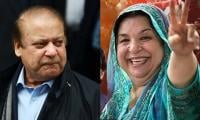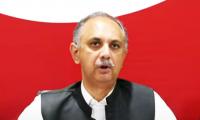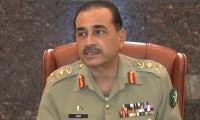ISLAMABAD: With lowest GDP growth prospects of 0.5% among all South Asian states, the World Bank (WB) warned Pakistan about external financing risks that could be compounded by difficulties in rolling-over bilateral debt from non-traditional donors and tighter international financing conditions.
According to the World Bank’s released report on South Asia revealed that the regional growth was expected to rebound at 4.5 percent in FY21 against negative 7.7 percent in last fiscal year 2020 while Afghanistan’s growth is now projected at 2.5 percent, Maldives 9.3 percent, Sri Lanka 3.3 percent, Bangladesh 1.6 percent, Bhutan 0.6 percent, Pakistan 0.5 percent and India 5.4 percent in FY21.
India’s economy had contracted by negative 9.6 percent last fiscal year FY20.
The WB says that there are considerable downside risks to the outlook of Pakistan’s economy with the most significant being a possible resurgence of the infection, triggering a new wave of global and/or domestic lockdowns and further delaying the implementation of critical structural reforms. “Locust attacks and heavy monsoon rains could lead to widespread crop damage, food insecurity and inflationary pressures, and livelihoods for households dependent primarily on agriculture could also be negatively impacted” the WB feared.
In Pakistan, economic growth is projected to remain below potential, at 0.5 percent for FY21 compared to over 4 percent annual average in the three years to FY-2019. This projection, which is highly uncertain, is predicated on the absence of significant infection flare ups or subsequent waves that would require further widespread lockdowns.
Pakistan’s economy has been severely affected by measures taken to contain the pandemic. Economic activity contracted and poverty is expected to have risen in FY20, as monetary and fiscal policy tightening, earlier in the year, was followed by lockdowns. Growth is expected to gradually recover but remain muted, given heightened uncertainty and the resumption of demand compression measures. A possible resurgence of the infection, widespread crop damage due to locusts and heavy monsoon rains pose major risks to the outlook.
Real GDP growth (at factor cost) is estimated to have declined from 1.9 percent in FY19 to -1.5 percent in FY20 (the government had estimated that the GDP growth stood at -0.4 percent for FY 2020) the first contraction in decades, reflecting the effects of COVID-19 containment measures that followed monetary and fiscal tightening prior to the outbreak.
Regarding outlook of the economy, the WB says that while domestic economic activity is expected to recover, as lockdown measures are lifted, with a gradual decline in active COVID-19 cases, Pakistan’s near-term economic prospects are subdued.
Significant uncertainty over the evolution of the pandemic and availability of a vaccine, demand compression measures to curb imbalances, along with unfavorable external conditions, all weigh on the outlook.
Economic growth is projected to remain below potential, averaging 1.3 percent for FY21-22. This baseline projection, which is highly uncertain, is predicated on the absence of significant infection flare ups or subsequent waves that would require further widespread lockdowns. The current account deficit is expected to widen to an average of 1.5 percent of GDP over FY21-22, with imports and exports gradually picking up as domestic demand and global conditions improve.
The fiscal deficit is projected to narrow to 7.4 percent in FY22, with the resumption of fiscal consolidation and stronger revenues driven by recovering economic activity and critical structural reforms.
Expenditures will remain substantial due to sizable interest payments, a rising salary and pension bill, and absorption of energy SOE guaranteed debt by the government.
Given anemic growth projections in the near term, poverty is expected to worsen. Vulnerable households rely heavily on jobs in the services sector, and the projected weak services growth is likely to be insufficient to reverse the higher poverty rates precipitated by the pandemic, the WB concluded.
Meanwhile, Oxfam and Development Finance Institution (DFI) revealed in its report on Wednesday that Pakistan’s overall ranking on Commitment to Reducing the Inequality Index (CRII) improved by nine notches from 137th position to 128th position in 2020.
However, Pakistan stands among ten bottom countries related to public spending and services as its ranking stood at 148th position out of total 158 countries. Islamabad tax ranking stood at 71st position and labour ranking at 116th position out of total 158 countries.
According to Oxfam’s announcement, the government’s commitment for public spending pushes Pakistan nine points further up on Oxfam’s Commitment to Reducing the Inequality Index.
The index ranks 158 governments on their policies on public services, taxes and workers’ rights; three areas pivotal to reducing inequality and diminishing the COVID-19. It is being launched ahead of the World Bank and International Monetary Fund (IMF) virtual annual meetings next week.
Today, new analysis from the Oxfam and DFI reveals that very low spending on public healthcare, weak social safety nets and poor labour rights meant that the majority of the world’s countries were ill-equipped to deal with the COVID-19 health crisis.
The CRII shows that only 26 out of 158 countries were spending the recommended 15 percent of their budgets on health prior to the pandemic. Further, in 103 countries, at least one in three workers lacked basic labour rights and protections, like sick pay, when the virus struck.
Pakistan improved its ranking from 137 in 2018 to 128 in 2020 out of 158 countries.
Syed Shahnawaz Ali, Country Director of Oxfam in Pakistan said, “Pakistan is among the bottom ten countries in terms of public spending and services, ranking at 148th out of the 158 countries. The country spends far too little on health, just 4.10 percent of the total government budget, leading to inadequate public health services and forcing people to pay out of their pockets to get essential health services. Compared to other countries in South Asia, Pakistan is the third lowest in health spending after India and Afghanistan.”
Meanwhile, Pakistan has worked to improve its social protection spending by increasing the Ehsaas programme’s budgetary allocation from Rs102 billion in 2016 to Rs180 billion in 2020. During COVID-19, 12 million families were supported with unconditional cash transfers of Rs12,000, alleviating the economic pressure which had exacerbated due to the pandemic. Unconditional Cash Transfer Programme has now improved as the Ehsaas Kafaalat Programme, through which monthly cash stipends of Rs2,000 will be given to at least 7.0 million most deserving and the poorest women all over the country.
On tax, the report ranks Pakistan 71st out of 158 countries due to its statutory tax rate on paper. However, the country is performing poorly on the collection of both personal and corporate income taxes. This has led to low public and social spending and aggravated its debt crisis.
Pakistan is highly burdened with the country’s public debt, with the total debt taking 86.1 percent and 77.7 percent of its GDP respectively.
In the last fiscal year, Pakistan spent Rs2,698.1 billion on debt servicing, taking away 57.5 percent of its revenue, which could have been spent on public spending, especially to mitigate the spread and after- effects of COVID-19.
Syed Shahnawaz reiterated the recent call by Prime Minister Imran Khan for debt relief for poor countries. It will not only help Pakistan but other countries suspend their current debt and negotiate comprehensive cancellation of its overall debt as soon as possible, to free massive amounts of money, which can be used for anti-inequality spending.
All the additional resources generated through debt relief or concessional lending must be diverted towards social spending to offset the impacts of COVID-19 and address long-term deficit in public services to address inequality and poverty.
Judge raised the query after warning to announce the verdict if Maneka’s lawyer remained absent from the hearing and...
The development came amid the United States’ explicit opposition to the bilateral project
Qaiser claimed that both parties rejected entire process which led to the formation of the incumbent government
She examined a proposed site for the construction of a state-of-the-art hospital in Murree and approved
Raoof Hasan warned against any attempt to extend the tenure of Chief Justice of Pakistan Qazi Faez Isa by another...
These payments will help PBA members to clear some of their liabilities







